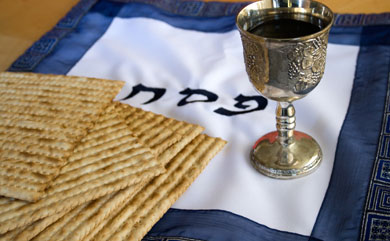This year, the Christian observance of Easter and the biblical observance of three spring feasts that include Passover are separated by a month and it gives us a chance to take a closer look at one of God’s appointed times when He kept His promise and imparted to us His righteousness through the life, death and resurrection of His Son, Jesus Christ.
It can be easy to overlook the fact that Passover is not the only biblically mandated feast that occurs during this week and often we fail to understand the prophetic significance of each.
First, there is the feast of unleavened bread, which plays a very important part in observing Passover, and the message of God’s deliverance. This bread made in a hurry is ripe with symbolism. Leaven is used to represent sin and sin must be removed from our lives and our homes, it is where we get the tradition of spring-cleaning.
Jesus, of course, lived a life without sin and when we remove the sin from our lives it is done through Him. The matzo or unleavened bread is much like a giant cracker with holes pierced in it and stripes of dark brown over the light brown. It is crisp and easy to break unlike the wonder bread we eat the rest of the year.
This is to remind us that He was pierced for our transgressions and by His stripes we are healed and that His body was broken for our sin.
The matzo that is broken is the middle of three on display during the Seder like the second part of the Trinity it represents the Son of God by being called the bread of affliction and part of it is hidden for a time but soon it is found.
You probably understand the imagery of Passover itself, from the lambs and the daily sacrifice to power of the blood that must be applied to the human heart in order to allow the second death to Passover but did you know that Passover was traditional informal coronation of the kings of Israel to seat a king until Rosh Hashanah? And that Jesus was legally made King by the ruling government of Rome?
Then there is the victory of the last feast, one that is not given much attention even though it is really the most important of all. The feast of first fruits was a celebration of new life when the seed that had died now brought forth a harvest. Without the resurrection there is no hope of the victory over sin and death, no promise of abundant life and certainly no King.
The feast of first fruits also begins the countdown to the feast of Shavuot 50 days later when the Lord would send His Spirit as a deposit on an even greater promise, that of the Messianic age.



